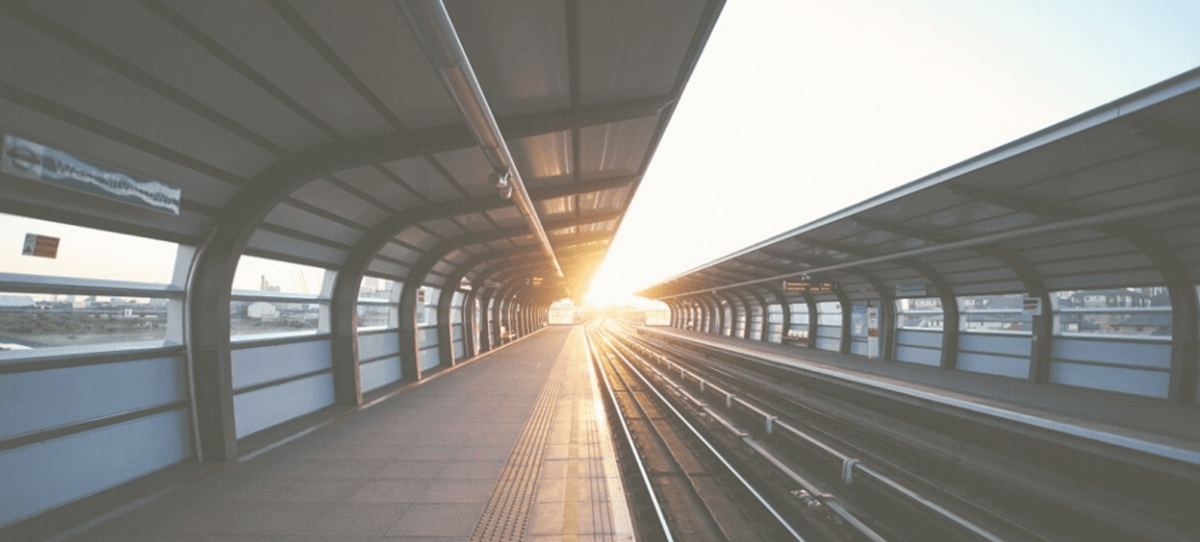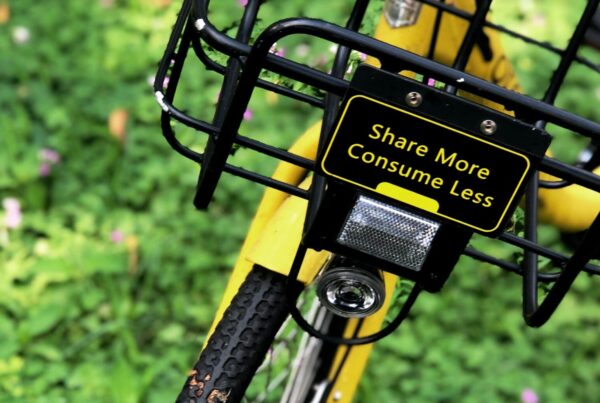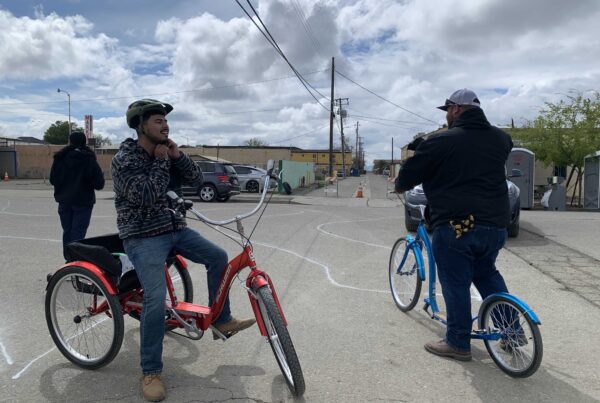The COVID-19 pandemic has dramatically affected transportation agencies and mobility services alike. While we are still in the middle of this ongoing crisis, quick responses, amazing data analysis, creativity, and dedication is helping essential workers provide the services that help keep us safe. A number of organizations have cataloged these methods, and we have analyzed the potential impact of the crisis on shared mobility in our Learning Center. Meanwhile, we are attempting to take a somewhat longer view here and consider how mobility for all can be positive and beneficial in the coming years as we are reshaped by the lessons and needs coming out of this crisis.
Now: The pandemic has changed our travel patterns, and rush hour may never look the same.
Opportunity: If demand is more evenly spread throughout the day, perhaps we can expand the frequency of service without additional capital costs — helping to improve the overall availability of transit.
Working from home has gone from being an increasing trend to an obvious part of the workweek (if you have a job where you can) due to the stay-at-home mandates—and this has changed travel patterns. We are seeing lower peaks at typical rush hours and traffic spread throughout the day.
As the current conditions change, our behavior most likely will too. But, if working from home becomes a greater part of our work week, we can spread out transit service and make it work better for a wider variety of trips. Getting people back to a shared transit environment will be difficult—in China, car usage has soared back but transit usage is still at a 50% level—but with improved routing and frequency it is possible and essential.
Now: Transit is an essential resource for essential but vulnerable workers.
Opportunity: Take a serious look at transit justice and equity in the employment sectors and use this to improve routing.
The Department of Homeland Security has classified certain services as being essential during the pandemic, and they employ a total of 34-43% of the US workforce. These individuals, who work in grocery stores, drug stores, and health care facilities, are risking their well-being to help sustain our health every day. Transit MUST go on, no matter what, for the people who rely on it, day and night, and for all of us who rely on them.
Yet, there are realities and inequities built into transit systems that affect these same groups. For example, communities of color are less served by transit and less connected to essential community assets like grocery stores, pharmacies, and health centers; a large percentage of essential transit workers are people of color who expose themselves to COVID-19 on a daily basis; a large number of essential workers in healthcare and other basic services are also people of color and immigrants who often don’t own a car. Given these realities, how can we do better post-pandemic?
Consider this: we can tie new infrastructure and other funding to improving the way we route transit and make sure that we are serving essential services and that we are locating these services close to housing. In addition, we can broaden the role of transit agencies so they can work with local governments around land-use decisions.
The recent stimulus bill that passed in March includes $25 billion for transit agencies. These funds are desperately needed to keep buses and trains running for essential workers, even as overall ridership has plummeted. But this money will not be enough for the restructuring that needs to take place. We need to work together to ensure that the next stimulus and reauthorization bill contains resources and policies that tie together a variety of modes, expands choice for users, and requires the service changes needed to make transit an essential utility.
If you’d like to track transit responses to the Federal Coronavirus Economic Relief Plan or CARES Act, NACTO and Bloomberg Philanthropies have created a great resource: the Transportation Response Center.
Now: People are walking and biking.
Opportunity: We can invest in better pathways, bikeways, and routes to keep them there.
Our sidewalks have shrunk while our roadways have widened, making social distancing a difficulty. New York State Governor Andrew Cuomo has proposed addressing this in a way unheard of before the pandemic: by converting streets to active transportation spaces. Boston, Minneapolis, and Oakland, CA have followed suit, closing streets to through motor traffic. In Bogotá, Colombia, city officials have established 76 Km (47 miles) of temporary bikeways throughout the city to reduce the virus spread. Oakland, California is making 74 miles of streets available for biking and walking. There is no reason why infrastructure shifts like these must end or go back to the way they were when the crisis is over. We can embrace active transportation, connect it better with transit systems, and keep this going through smart urban design practices and land use regulations.
People are now seeing the sheer amount of land that is devoted to streets and parking. We can remake our streets and take back our land, especially as cars sit unused most of the time. Again, we need to codify wider sidewalks and larger bike networks throughout all our communities.
Now: Delivery has become vital and it will continue to be an important part of our communities.
Opportunity: Let’s make delivery environmentally friendly and efficient and link it back to our local economy as much as possible.
The use of delivery services from Amazon to Instacart to GrubHub has soared, especially as many are offering drop off and contactless delivery options. With their operations in focus, we can start designing these services to be environmentally friendly and efficient. Opportunities abound for electrification, use of active transportation, and using mobility hubs for pick-up and drop-off.
Now: Mobility Service Companies are questioning their business models
Opportunity: Focus on long-term stability
Shared e-schooler companies Lime and Bird suspended their services in cities all over the world, and Bird followed by laying off 30% of its workforce. With plummeting usage, Gotcha is offering its electric vehicles to delivery services and merchants. Even Lyft and Uber have seen significant drops in usage, and both companies, as well as Via, have temporarily ended shared rides.
While stay-at-home orders are the immediate cause, corporate growing-pains were especially hard on smaller companies. We need to look at how we support companies that will benefit public outcomes, while seeing how we can incorporate innovation and flexibility into our existing public services. We need to find ways to reward companies that contribute to mobility for all. As multi-modalism gains widespread acceptance and use, the companies that meet public interest goals will be an important component of the overall landscape of services.
Now: We are finally reducing CO2 emissions.
Opportunity: Create actionable strategies to keep reducing them after the pandemic.
The pandemic made this apparent —if you cut auto use significantly, the reduction in CO2 levels is dramatic. Popular Science reports that New York is seeing carbon monoxide levels down by nearly 50 percent from 2019 from car and truck emissions. Not to be outdone, LA is seeing smog-free air.
The situation we are in now is extreme. The global economy is on hold and the daily commute often consists of walking to your home office, or the kitchen table. But things will get moving again and we must develop strategies to continue emissions cuts to lessen the impact of climate change. We know now that reducing auto use can cut emissions as needed. So the question is, how do we design urban systems – from transit investments to urban design and land use to affordable housing – that enable people to use cleaner transportation options, post-pandemic?
Close
The global COVID-19 pandemic has taught us valuable lessons, and we are still learning. It has highlighted the flaws in the medical system and helped us appreciate our social networks. On the shared mobility front, it pushes us to make transit work as well as it possibly can and shows people the value of active transportation. It’s taught us to plan for more resilient and sustainable communities. And most of all, it’s taught us that we cannot afford to go back to the way things were.
We will continue and contribute to this conversation at our upcoming Virtual Summit on May 5-6. There is a lot we can all learn together to make things work.
Pandemic Guides and Recommendations:




